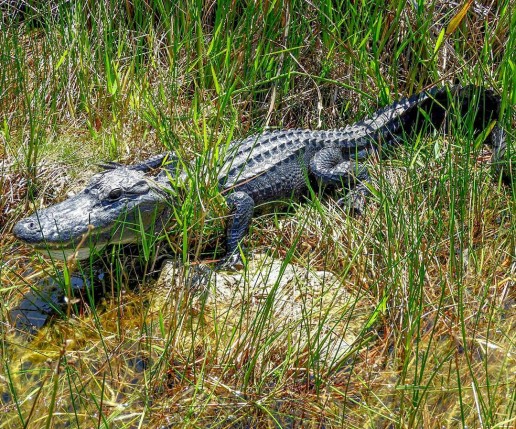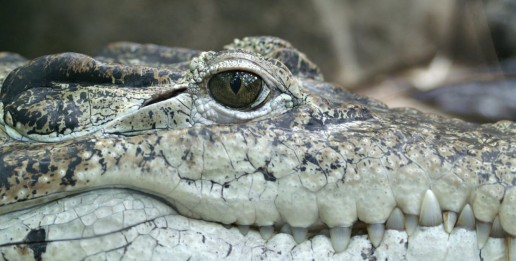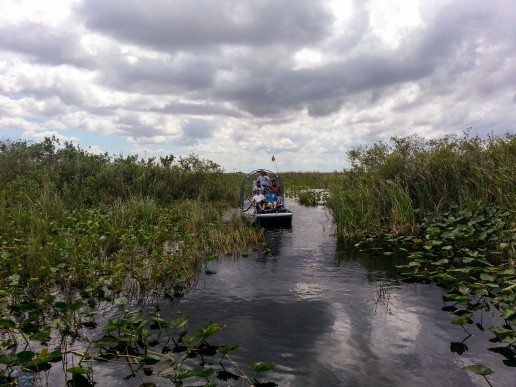5 (Debunked) Alligator Myths
Of all the many animals that live in the Florida Everglades, none are as iconic as the American alligator. Second only to the nesting wading birds of the dry season, alligators are the most popular species of Everglades wildlife. You can learn much about them on alligator tours at Mack’s Fish Camp. But for now, we’d like to clear up a few alligator myths.
Myth #1 – Alligators are slow
Alligators are mostly seen as either floating in water, laying about, or casually walking across a gold course. But, don’t be fooled. Because alligators are ambush predators, they rely on quick bursts of speed to catch their prey. Though not fast, alligators are capable of moving at 10-15 miles per hour from a standing position. In the water, they can swim nearly twice as fast because of their muscular tails!
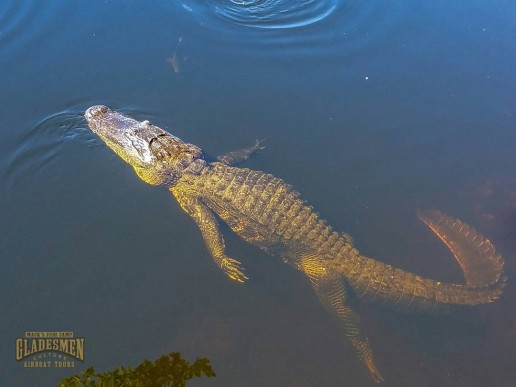
Myth # 2 – Alligators are at the top of the Everglades Food Web
While they definitely close to it, the American alligator doesn’t sit at the top of the Everglades food web. The Burmese python, an exotic invasive species, is now the apex predator of the Everglades, and preys on alligators. Of the alligator myths listed, we wish this one was true, as Burmese pythons have become a significant threat to Everglades wildlife.
Myth # 3 – Alligators are vicious
Intimidating as they look, alligators aren’t bloodthirsty. Their cousins the crocodile, particularly Nile crocodiles, are known as aggressive potential man-eaters. Alligators are quite shy, and try to avoid humans. But, they can become aggressive if you’re near their nest, or if they have been fed by people. Feeding alligators makes them associate people with food, so if you encounter a wild alligator, don’t feed it!
Myth # 4 – Gators can’t climb
Again, that seemingly lazy log with eyes shouldn’t be underestimated. Young alligators are more agile, but adult alligators are very strong and muscular. Adult alligators rely on a combination of their sharp claws and long tails to climb trees and even fences! They can use this ability to pursue prey up trees, though they prefer to “work smart, not hard” and wait under the tree.
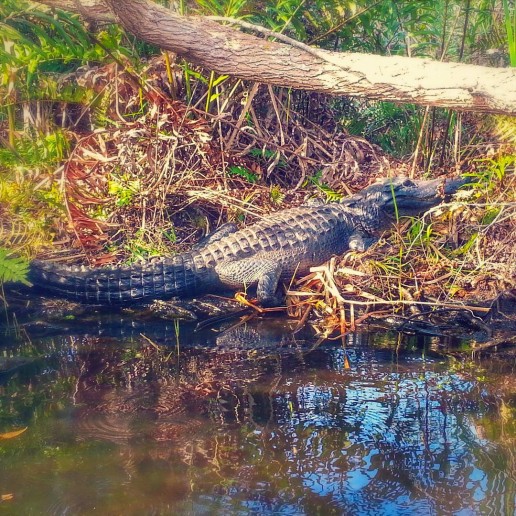
Myth # 5 – Alligators can’t survive without warm weather
Alligators are reptiles, and not only are they cold-blooded, they can’t regulate their body temperature on their own. The Florida Everglades is perfect for them, because alligators thrive in temperatures between 82 and 92 degrees. However, every so often the Everglades is within reach of cold winter weather, but alligators are ready for it. When faced with temperatures of 55 degrees or lower, alligators go into a dormant state, slowing their heartbeat to 1 to 2 beats per minute!
Alligators are amazing and powerful creatures, so it’s easy to fall victim to some of these alligator myths. But with a good balance of curiosity and skepticism, you can discover the truth about these awesome animals. The alligator tours at Mack’s Fish Camp let you see them up close in their natural habitat. You’ll also learn more about alligators and also the Everglades ecosystem from Florida Gladesmen that have lived alongside them for generations.
Alligators and Crocodiles in the Everglades
The American alligator, in addition to being the state reptile of Florida, is recognized as a symbol of the Everglades. While on an airboat tour in Miami, you’ll likely see so many alligators that you’d lose count! But even if you were keeping score, you might be counting some crocodiles by accident.
The American Crocodile
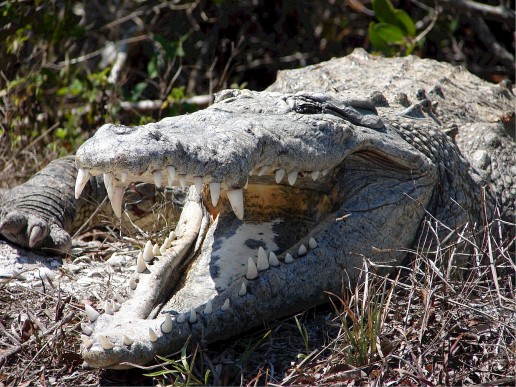
The American alligator and the American Crocodile belong to a reptile group named crocodilians, which are the largest living reptiles in the world! The Florida Everglades is the only place on earth where both species coexist. It is the extreme southern range American alligator and the extreme northern range for crocodiles. At a glance it can be difficult to tell them apart, but there are distinct differences between the two if you take a closer look.
Crocodiles have pointy, longer snouts, while alligators have more rounded, shorter ones. You can still see all of a crocodile’s bottom teeth when its mouth is shut, but gators only show some of their upper teeth. Crocodiles are usually lighter in color, having grey to green backs and white to yellow undersides; alligators are a darker grey or black.
Despite their subtle differences, Alligators and Crocodiles are both listed as “Federally Threatened by Similarity of Appearance”
Other Differences from Alligators
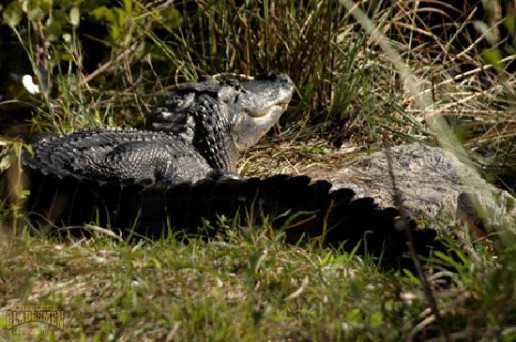
- Alligators and crocodiles both have spots by their mouths called “dermal pressure receptors” that sense tiny pressure changes in water caused by movement, but crocodiles have them all over their bodies!
- Crocodiles have stronger salt glands than alligators do, which makes them more adaptive to saltwater and are often seen near saltwater areas of the Everglades like Florida Bay. Alligators prefer freshwater habitats.
- Alligators have an average lifespan of between 30-50 years, but crocodiles live twice as long as them, with an average lifespan between 70-100 years.
- Crocodiles have adapted to be almost unseen when in the water. While on a private airboat tour, you may only catch sight of their nostrils and eyes poking above the water.
- American crocodiles are typically as calm and aloof as alligators, but are known to be aggressive and can attack anything in the water near them.
These amazing creatures are a valued part of the Everglades. They might appear calm, but they’re still wild animals, and are most safely seen on a guided airboat tour. Being able to observe alligators, crocodiles, and the many different species of Everglades wildlife here at Mack’s Fish Camp on an airboat tour offers an experience like no other!
Everglades Wet Season, For an Adventure All Your Own
From the River of Grass to the Hardwood Hammock, a noticeable change is now happening in the Florida Everglades, the beginning of the “Wet Season”. From May through November, the Everglades experiences its hottest and most humid temperatures of the year, as well as the highest amount of rainfall. Both the temperatures and humidity percentage average around 90.
The increased rainfall and humidity is partly caused by storms and moisture coming from the Tropics. The Everglades wet season takes place at the same time as the Atlantic Hurricane season, when tropical storms and hurricanes are likely to form. Although these storms pose a threat if they were to make landfall, the National Hurricane Center is very good at tracking them and helping people prepare. Thankfully, South Florida hasn’t seen a major hurricane in over a decade!
Some Everglades Wildlife Like the Rain More
Despite the change in weather during the wet season, it’s actually a great time to take an Everglades airboat tour. Though more scattered now due to the abundance of water, wading birds that nested during the dry season are now raising their young and showing them how to hunt for fish. But, the biggest Florida wildlife star of the season is the American alligator.
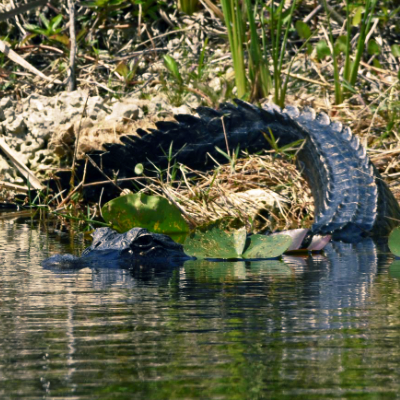
Through the summer months, alligators are the most active animal in the Florida Everglades. Their mating season stars around June, followed shortly by nesting and hatching, with the small roars of baby alligators filling the air by August. It’s during this time that they build their dwellings called “alligator holes”, which hold water collected during this time and help to serve as an oasis to other Everglades wildlife.
Less Wading Birds, But Not Less Animals
Gators aren’t the only cold-blooded creatures that like to play in the rain. While you’re out on an Everglades airboat tour, you’re likely to see a lot of different species of amphibians like frogs and salamanders all along the airboat trails.
The wet season brings an increase of insects to the Everglades, providing them with a feast to snack on. But the frogs can only eat so many of them, so we make sure to provide you with bug screen to keep their leftovers at bay!
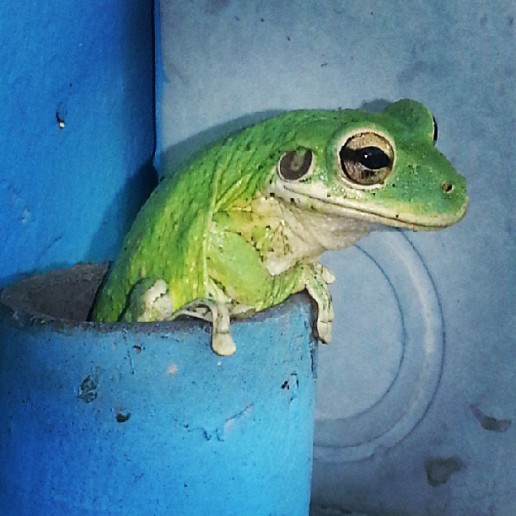
A Private Airboat Tour Feels More Private Now
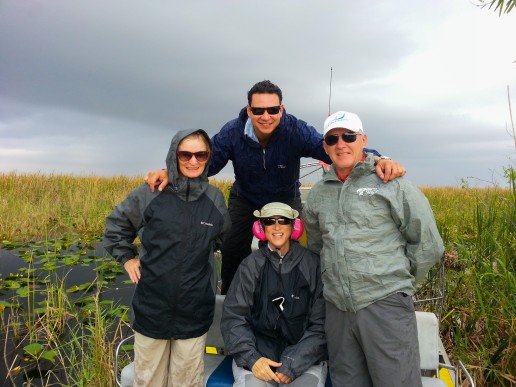
For what the Everglades lacks during the wet season in terms of concentration of wildlife, it makes up for in openness and privacy, making a private airboat tour a much more personal experience. And if you’re a Florida resident that’s been waiting for the snowbirds to clear out so that you can enjoy your own backyard, then your time has come!

